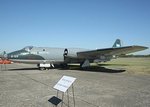CharlesBronson
Senior Master Sergeant
What is confusing to me is the complete utter lack of indication that the weapons ultimately detonated. Assuming that the fuses were set too long for detonation in the target hull, you would expect them to detonate after they had passed through
Yea I see your point. Sometimes the fuzes even with setting "long" after the hit didnt make explode the bomb wich was embedded inide the ship. That could have two explanations.
Too "hard" fuzes, meaning that they need a really hard blow in order to start the ignition process or defective timing device, maybe in the following part Pereyra explain it.




